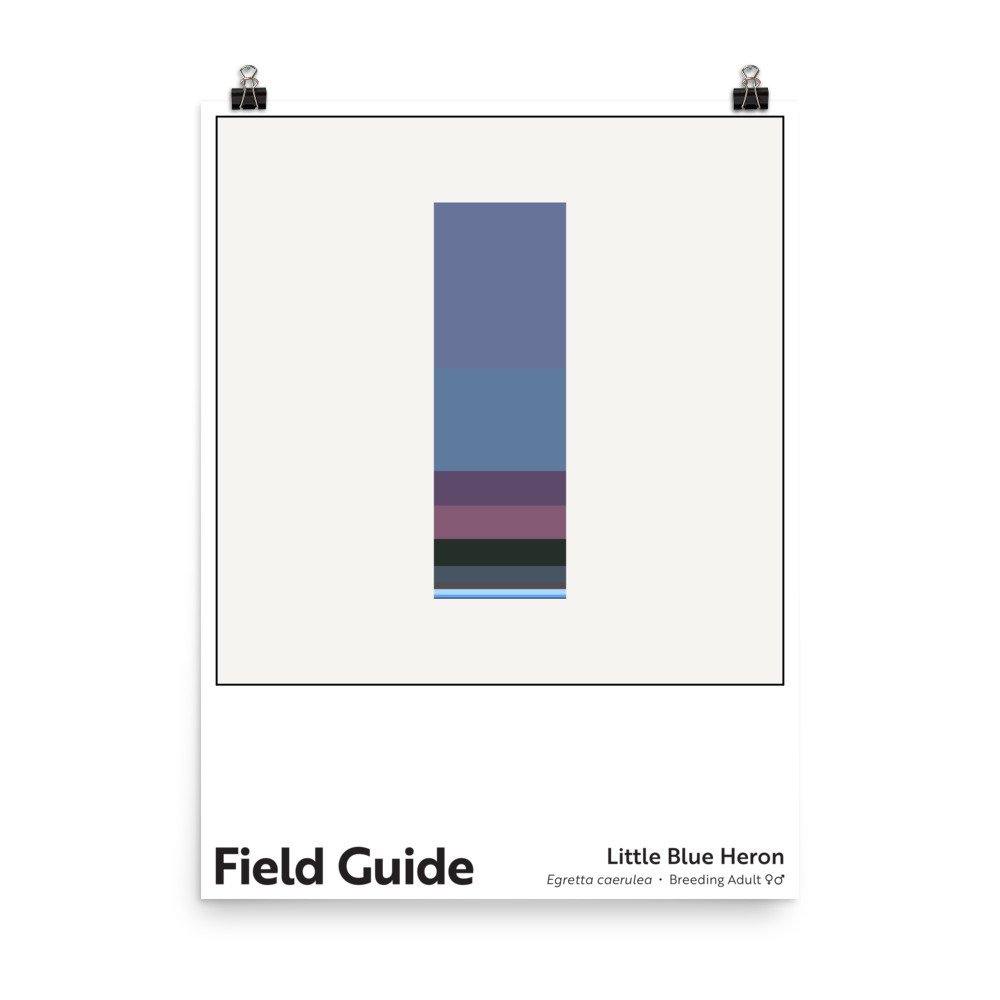Field Guide : Little Blue Heron
Field Guide : Little Blue Heron
Unlimited edition. 18 x 24 inch, museum-quality poster on matte paper.
In 2023, I was able to gawk at this beautiful bird in Belize. As our boat traveled up the Monkey River in the country’s southeast, good numbers of little blue herons flapped ahead of our bow. The individuals I saw were not attired in breeding plumage, so their blues, violets, and mauves were less saturated and their legs were much lighter than those of breeding little blues. (Breeding adults have darker irises, legs, and bluer bills and lores, as depicted in this color column.) One curious aspect of little blue heron morphology is the striking difference in appearance between immature birds and adults; an immature little blue heron is almost completely white except for its ashy bill and pale yellow-green legs. As a result, people often mistake juvenile little blue herons for egrets.
On that subject, I’ve heard well-intentioned people explain that “despite its name, the little blue heron is actually more closely related to egrets.” This observation makes sense only if we’re ignoring biology and focusing solely on the common names we humans have given them. Herons and egrets aren’t that different, biologically speaking. In fact, the Egretta genus to which the little blue heron belongs contains about as many species with “heron” common names as it does species with “egret” names. There’s no significant biological boundary between herons and egrets; they’re members of the same Ardeidae family and, in many cases, the same genus. Perhaps it’s easiest to think of it this way: “egret” is the common name generally assigned to the whiter, slightly smaller members of the heron family. (And, with that in mind, maybe we could say the little white egret transforms into the little blue heron? 😉)
Note: These archival poster prints feature rich, appealing colors. I encourage customers to take care in handling them until they are framed/protected for display; the darker colors on the matte paper can be scratched. They ship rolled, so customers need to flatten them before framing (or have their framer do so).
Charitable Sales Model: Whenever one of these poster prints is purchased, a charitable contribution equal to 10% of the print’s cost (or $3.60) is made to a nonprofit working to tackle environmental or social challenges. Read more about my charitable sales model here.

